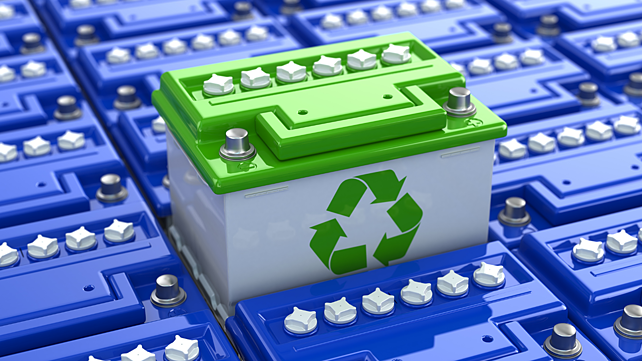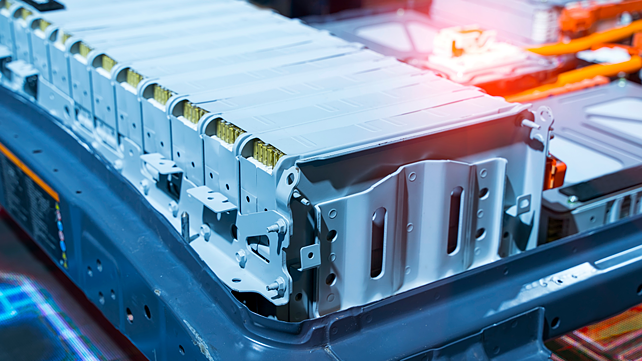
Co-Author: Dr Anjali Singh
India’s commitment towards the transition of fossil fuel-based vehicles to electric vehicles (EVs) will significantly increase the demand for batteries in the coming years. Presently, the lithium-ion battery (LiB) is the most suitable option among various existing battery technologies.
LiB has many variants, but the majority of EVs are powered by lithium nickel manganese cobalt (LNMC) and lithium iron phosphate (LFP) batteries. These batteries have a shelf life of around eight to 10 years, but once the energy generation capacity drops below 80%, they are unfit for EVs. However, these batteries can still be used in renewable energy (RE) storage and other stationary applications.
According to reports, around 0.4 GWh LiBs were available for recycling in India in 2020. A cumulative volume of retired LiBs (direct from EVs and after second-use applications) is estimated to reach around 70 GWh by 2030. Around ~90% of these can be recovered with appropriate recycling treatment.
With the existing recycling technologies, valuable metals such as cobalt, nickel, manganese, lithium, graphite, and aluminium can be recovered up to ~90%. These constitute around 50-60% share of the total battery cost, with cobalt being the most expensive.
However, currently, there is no commercial-scale recycling mechanism in India. Retired batteries are being stocked and dumped into landfills without appropriate treatment. LIBs contain hazardous materials such as lithium (which spontaneously reacts with moisture, creating explosions), nickel, and cobalt. These environmental contaminants can harm human health too.
Presently, the commercially viable technologies for recycling are – mechanical process (physical separation of components), pyro-metallurgical (thermal treatment), and hydro-metallurgy (chemical treatment). Among these, hydro-metallurgical is the most efficient (~95 % recovery) and least energy-intensive.

LiB recycling is a well-established industry globally. In 2019, around ~100,000 metric tonnes of an available ~180,000 metric tonnes of LiBs were recycled. Realising the growth potential of the LiB market and its recycling benefits, countries such as the USA, China, Japan, etc., have introduced specific policy and regulatory measures to encourage commercial scalability.
Government Focus
Similarly, the Government of India has issued draft guidelines on battery waste handling to curb the inappropriate handling and treatment of LiBs. These guidelines propose to mandate extended producer responsibility (EPR), forcing producers to take responsibility for the handling and treatment (collection, storage, transport, recycling, and disposal) of used batteries. The government also proposes some financial incentives to promote investments in LiB recycling.
A few companies have already initiated LiB recycling at a pilot scale. They have deployed pyro-metallurgical and hydro-metallurgical technologies with a material recovery rate of ~90%. The quality of recovered materials is up to 99% in purity level and suitable for reuse in fresh battery manufacturing. Recycling of LiBs is expensive (INR 90-100/kg), with policy support limited currently.
Presently, the country has a technology gap concerning infrastructure for LiB waste collection, storage, and recycling. Laws and regulations to mandate the handling, storage, transport, treatment, recycling, and disposal of retired LiBs are yet to be enforced. Further, guidelines for second-use applications of used EV batteries are needed for cost-effectiveness in large-scale deployment in renewable and other stationary applications.
A LiB circular economy will significantly benefit the domestic EV and storage industry. Recycled materials from retired batteries by 2030 can support the manufacture of ~60 GWh LiB cells in India, reduce the dependency on imports, and create new business opportunities for Li-cell manufacturers, thereby complementing the government’s AatmaNirbhar Bharat mission. Using recycled materials can avoid up to ~90% of CO2 emissions, according to research.
With batteries being an integral part of a sustainable future, India needs to urgently consider a sustainable recycling infrastructure, to make India’s transition to EVs smooth.
About the Authors: The authors work in the area of Materials and Strategic Studies at the Center for Study of Science, Technology and Policy (CSTEP), a research-based think tank.